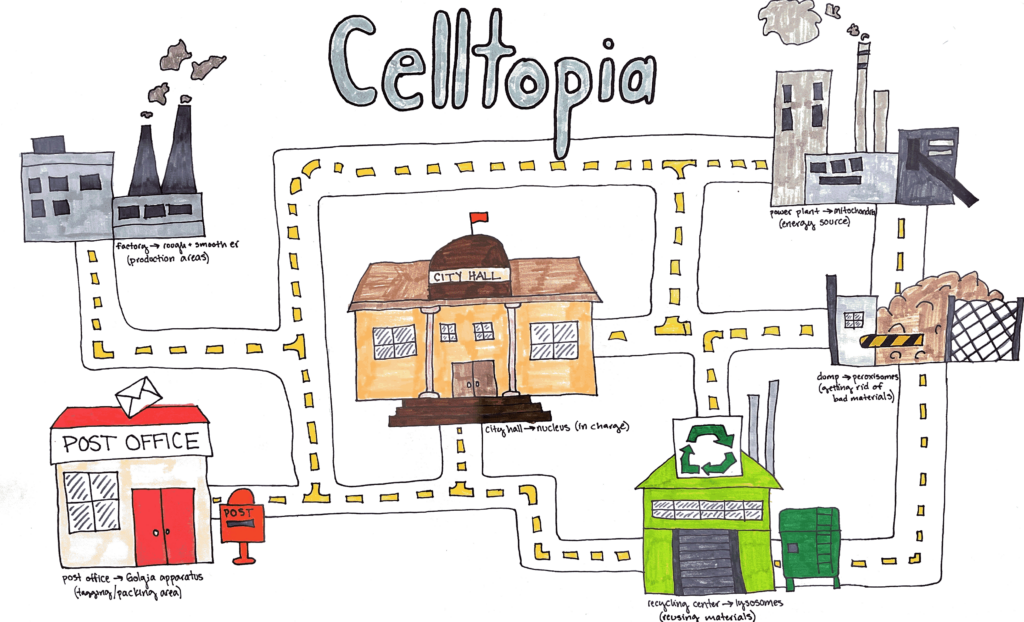
My project focused on comparing the different organelles in a cell. I went further into this topic by describing the membrane traffic pathways in my paper, which are how the different organelles communicate. I made a map to illustrate the inside of a cell. The different buildings represent the different organelles within a cell. The roads on the map represent the membrane pathways and illustrate how the buildings are connected and the fact that that is how they communicate with each other. City hall is the nucleus of the cell because it tells everything else what to do. It also contains the blueprints of the city, similar to how the nucleolus in the nucleus contains DNA strands. The power plant is the mitochondria because it produces and provides energy for the rest of the town/cell. The post office is the Golgi apparatus because it receives things from other places and tags and packages and sends them to other places. The recycling center is the lysosomes in the cell because they take in materials to reuse them somewhere else in the cell. The dump is the peroxisomes because it destroys unhelpful materials in the cell and gets rid of them. The factory represents the rough and smooth endoplasmic reticulum because it produces materials used in the rest of the town/cell. I went into further detail in my paper, but I thought a map would be a good way to visualize what the inside of a cell would look like.

Tova Gray’s representation of a cell as a city map is a unique and understandable visual for the differences of organelles in a cell. I liked how the roads act as connections between the organelles (buildings) because it illustrates how all the organelles need to communicate with each other to make sure the city (cell) operates to its full capabilities. The building choices are perfect for the functions of the different organelles. The energy source of the cell is the mitochondria which are represented by a power plant. The best representation of the Golgi apparatus is the post office due to the fact that it is the organelle that packages proteins into membrane-bound vesicles before the vesicles are sent to their destination. The lysosomes rid the cells of waste products, repair membranes, and respond against foreign substances. The recycling center was a clever choice for this organelle. My favorite city building is the dump, it portrays the peroxisomes. Peroxisomes produce chemicals as well as break them down, which makes “the dump” an amazing comparison. The Endoplasmic reticulum is the largest organelle in the cell. Its responsibility is the production and secretion of steroid hormones and the synthesis of important liipids. The factory illustration makes it easy to remember the endoplasmic reticulum function. Finally, the largest building in ‘Celltopia’ is the city hall which rightfully represents the nucleus. The placement of the building ensures you associate the nucleus with the center of town (the cell). The nucleus, much like city hall, controls and regulates activities in the cell. Tova’s artistic, well-thought-out city plan enables you to think through the functions of the cell. It makes an incredible amount of sense to me. I will probably always think of Celltopia when trying to remember all the organelles.